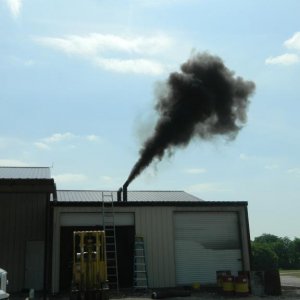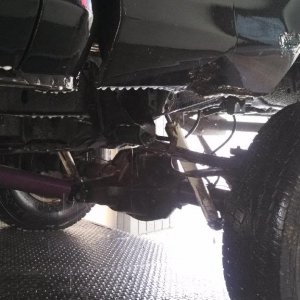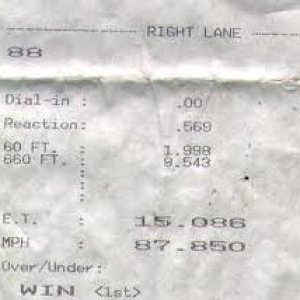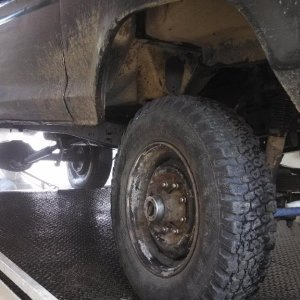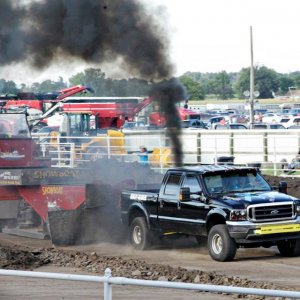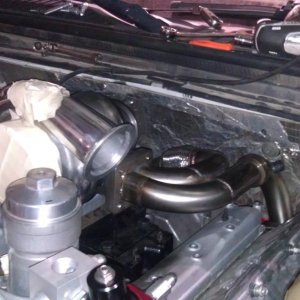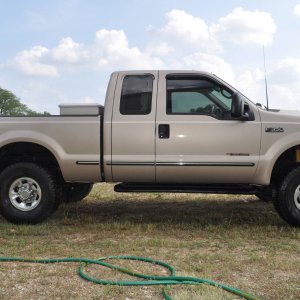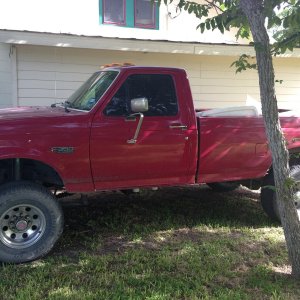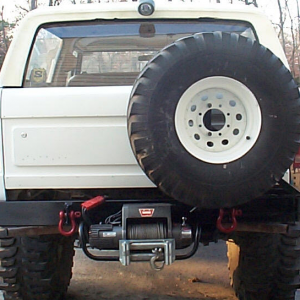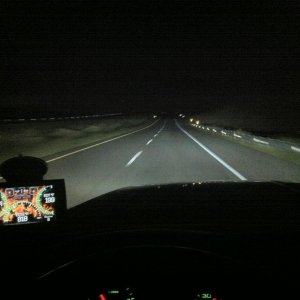I've decided the easiest way to get a compact, good flowing manifold is to build it up in sections of flat plate, contoured to the various shapes. This is similar to how one manifold manufacturer makes theirs.
Doing this I can get a good manifold, only 3 3/8" wide with flanges, making for an overall HE351 turbo protrusion of 18" from the center of the engine. I'd like to get that down to 17", but 18" is certainly liveable.
Here is what the runners look like in my first CAD attempt. Unfortunately, they will be mostly square in cross section. If I used a CNC mill to make the inserts, I could make them round, but for my purposes I think that I'll use plasma cut sections and thus they will be square except for the welding bead in the corners.
The port area is generally 1.5 x 1.5 inches throughout. The exhaust ports on a 6.7 Cummins are 1.5" round. The exhaust flanges will transition from 1.5" round to 1.5" square.
I'm still debating mild steel versus stainless. I have enough stainless plate to cut these parts, but I'm missing the right thickness for the top and bottom plates. The other issue is that stainless needs shield gas flow on the other side of the weld and its more prone to warping. And its probably more prone to cracking.
I'm debating between 3/16" or 1/4" wall on the manifold, leaning toward 1/4".

The height restrictions under the hood are making for a lot of extra work. The turbo system went from the HE351VE being bolt on to now needing a custom, narrow width manifold.
Its been almost 2 weeks now since I had dedicated time to work on this project. Very frustrating.
Doing this I can get a good manifold, only 3 3/8" wide with flanges, making for an overall HE351 turbo protrusion of 18" from the center of the engine. I'd like to get that down to 17", but 18" is certainly liveable.
Here is what the runners look like in my first CAD attempt. Unfortunately, they will be mostly square in cross section. If I used a CNC mill to make the inserts, I could make them round, but for my purposes I think that I'll use plasma cut sections and thus they will be square except for the welding bead in the corners.
The port area is generally 1.5 x 1.5 inches throughout. The exhaust ports on a 6.7 Cummins are 1.5" round. The exhaust flanges will transition from 1.5" round to 1.5" square.
I'm still debating mild steel versus stainless. I have enough stainless plate to cut these parts, but I'm missing the right thickness for the top and bottom plates. The other issue is that stainless needs shield gas flow on the other side of the weld and its more prone to warping. And its probably more prone to cracking.
I'm debating between 3/16" or 1/4" wall on the manifold, leaning toward 1/4".
The height restrictions under the hood are making for a lot of extra work. The turbo system went from the HE351VE being bolt on to now needing a custom, narrow width manifold.
Its been almost 2 weeks now since I had dedicated time to work on this project. Very frustrating.
Last edited:

